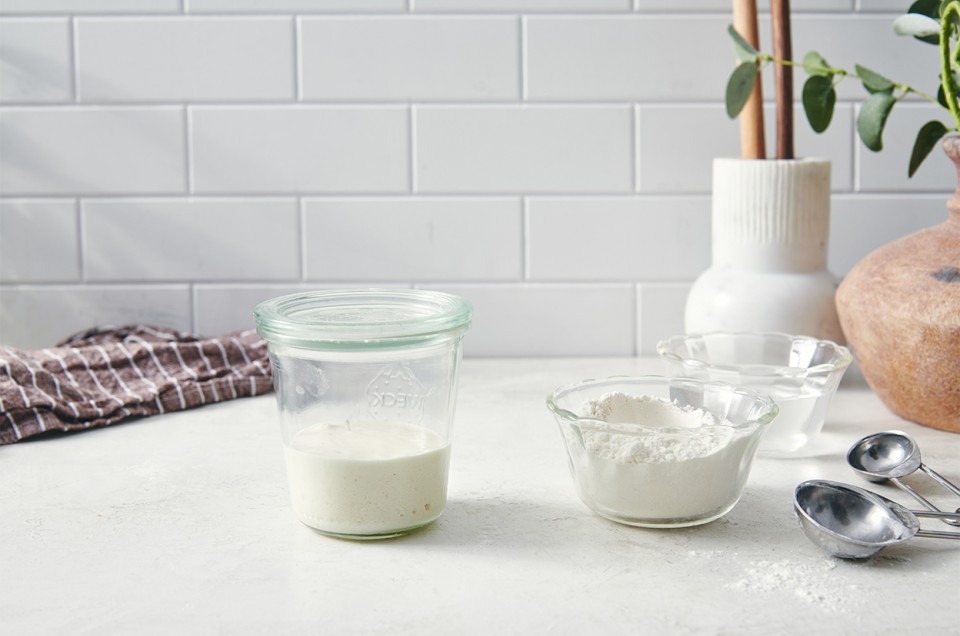


Here at King Arthur's Baker's Hotline we hear a common lament from frugal sourdough bakers:
“Why do I have to throw out so much sourdough starter every time I feed it? Isn’t there a way to avoid all this waste?”
Our tried and true maintenance routine requires discarding a full cup (227g, 8 ounces) of starter each time you do a feeding and aren't planning to bake, which can add up to a lot! That's why we've devised so many great recipes that utilize sourdough starter discard. But what if you don't want to deal with the discard to begin with?
If you’ve found a good groove for feeding and maintaining your starter that gives you great results and creates little waste, this blog post may not be for you. But if you're drowning in discard and wondering why you couldn't just maintain less starter, read on!
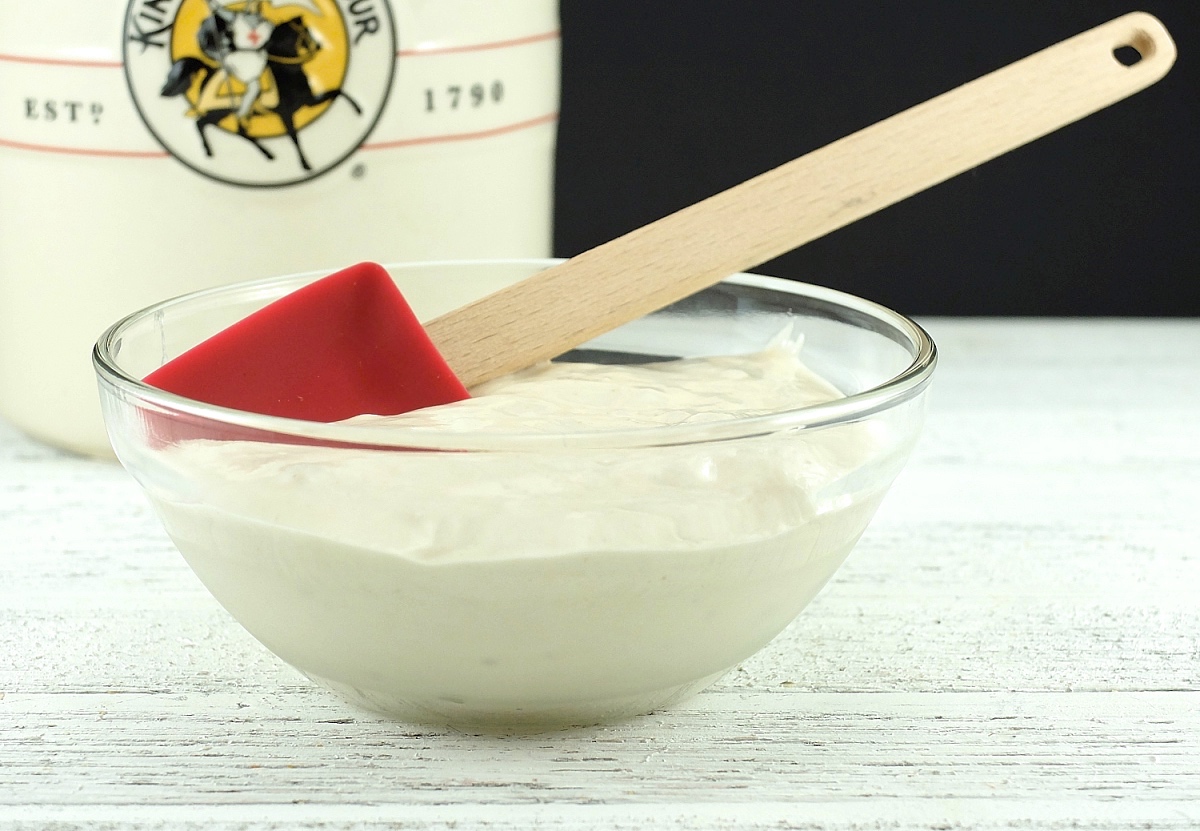
To be honest, we weren't sure how low it was safe to go.
Our sourdough maintenance routine evolved out of the artisan baking world, where bakers have nurtured sourdough cultures and produced beautiful breads for centuries. In production baking, starter is primarily kept at room temperature and nourished through a course of feedings that build the starter to the amount needed for baking, with enough left over to feed and begin the process all over again.
This system works great if you're baking daily and using a lot of starter. But of course, that's not the way most of us bake sourdough at home.
I was recently lucky enough to take a sourdough class here at King Arthur with guest instructor Debra Wink. She's an accomplished microbiologist and devoted baker who's combined two passions by turning her microscope to the world of sourdough starters. Wink was able to provide some really helpful insight when it comes to maintaining a smaller sourdough starter. From her own research and hands-on experience, Wink has concluded that refrigeration isn't likely to cause any permanent harm to your sourdough starter. In fact, Wink revealed that she regularly refrigerates her starters and maintains them at just two ounces, rather than the more normal 12 or so ounces.
What, only two ounces?
If you’re like me, your sourdough brain may be feeling just a little blown.
As soon as I heard "two ounces," I went home and reduced the size of all six of my sourdough starters. (And if you're wondering why on earth anyone needs six different starters — you're right, there's no good reason.)
They did come in handy this time, though! I was able to test the smaller starter method on a variety of starters: liquid, stiff, rye, whole wheat, and even two different gluten-free starters.
Conclusion: I've been maintaining reduced versions of my starters for a few months now and everyone is happy and healthy.
And, believe me, I was overjoyed to discover that my starters could thrive on this reduced maintenance routine!
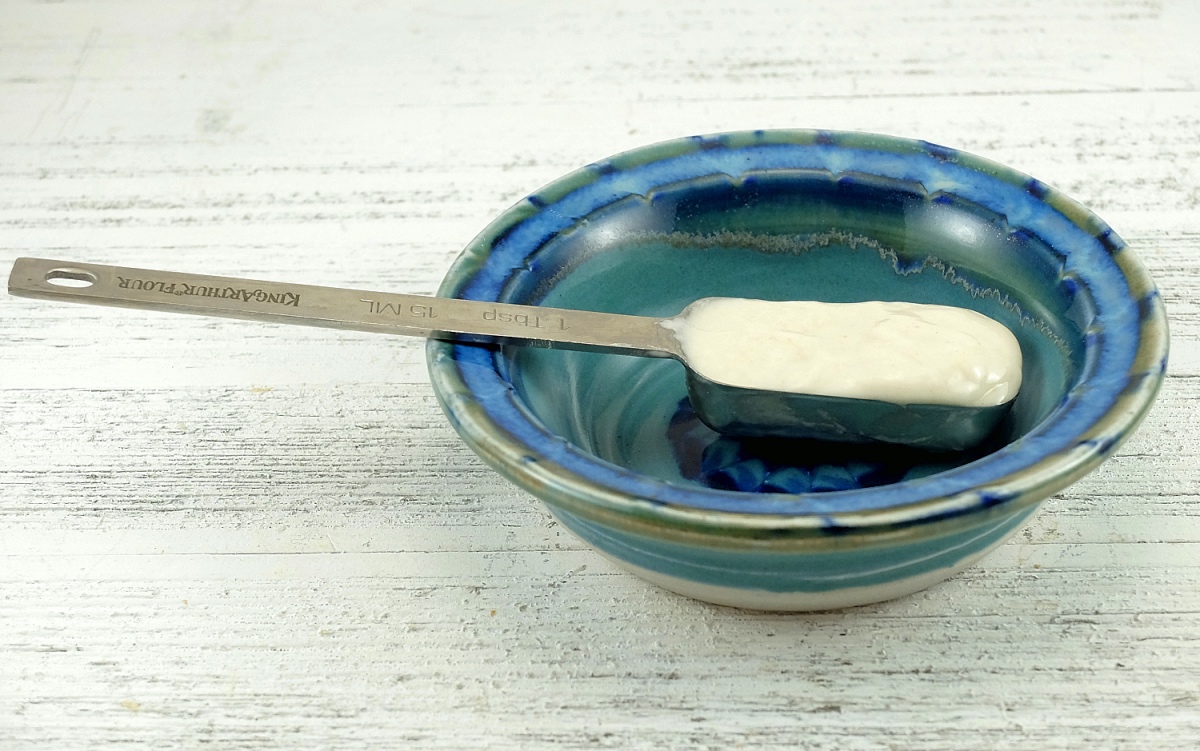
Note: For step-by-step directions in easily printable format, check out our recipe for maintaining a Smaller Sourdough Starter.
We’re going to keep the same ratio of ingredients as our regular liquid starter: equal parts by weight of starter, flour, and water. All we're doing is reducing each component to a much smaller quantity.
For this method, a digital scale really, really comes in handy. I can give you rough estimates for measuring by volume, but working with tablespoons of starter is messy and not very precise. So, take all that money you'll be saving in discarded flour and consider adding a scale to your baking toolbox.
Two ounces is equal to 57g, but for simpler calculations, I've rounded up to 60g. Not only will a scale make this process easier, but working in grams makes much more sense when working with such small quantities.
For 60g of starter: Save 20g (1 heaping tablespoon) starter and feed it 20g (4 teaspoons) water and 20g (2 tablespoons) flour.

If you decide to maintain a smaller sourdough starter, downsizing your tools can make the process much easier. Our regular sourdough crock is just too big for this little guy.
For our smaller starter, you'll need an 8-ounce canning jar or a similar-sized container. This jar will only be used for maintenance feedings. Be sure your jar has a wide mouth to make stirring easy.
Two identical jars can make the feeding process even easier. If you're weighing your ingredients you can tare the empty jar. If you're measuring by volume it will be easier to transfer the heaping tablespoon of starter to the clean jar.
You'll also need a larger container or bowl when it comes time to build the amount of starter you have in preparation for baking. Our sourdough crock could come in handy here, but I'd be wary of building more than 454g (16 ounces) of starter in this crock.
Mini spatulas and a mini-scoop can also make the feeding routine a lot easier.
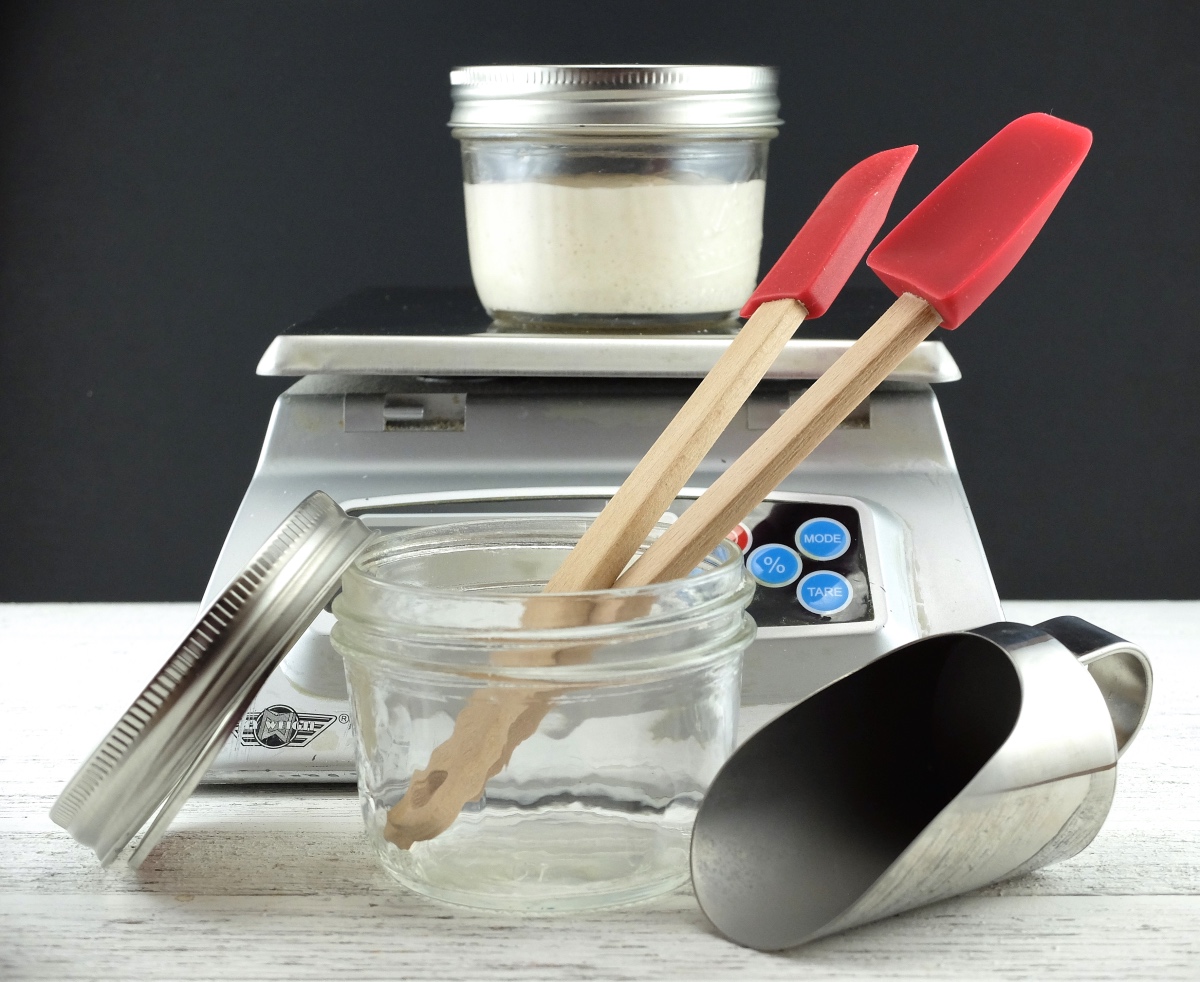
While refrigeration may not harm your sourdough starter, it doesn't provide the necessary environment or nourishment to keep bacteria and yeast populations at optimal levels for baking.
If you're accustomed to storing your starter in the refrigerator and feeding weekly, then you know it's helpful to take your starter out of the refrigerator a day or two before you plan to bake and start feeding it twice daily at room temperature. These revival feedings at room temperature help bring your starter back to full vitality.
When maintaining our regular 12 ounces of starter, two or three such revival feedings can generate as much as 567g (20 ounces) of discard.
The real beauty of maintaining a smaller sourdough starter is that the revival feedings that are necessary after refrigeration are integrated into building the quantity of starter, with little or no discard generated along the way.
Say you want to make our Naturally Leavened Sourdough Bread recipe on Saturday. This recipe calls for a daunting 454g (16 ounces) of ripe sourdough starter. Here's how to prep your smaller starter to bake:
Feeding 1: Thursday night you'll take your 60g of starter out of the refrigerator and give it a normal feeding:
Feeding 2: Friday morning, rather than discarding, you'll begin building the quantity of your starter. You'll save all 60g and feed it with equal parts flour and water:
Feeding 3: Friday evening, you'll do the last feed/build before baking on Saturday morning:
Saturday morning you'll have enough starter for the recipe (454g), plus 86g leftover. You'll need 20g of that 86g remaining starter to feed and perpetuate.
This means you're only generating 66g of discard with this last build. If you include the 40g of discard from the first feeding, the total discard generated is only 106g (less than 1/2 cup).
And how does the bread turn out when you use this method? I tried it out, and the results were pretty darn nice.
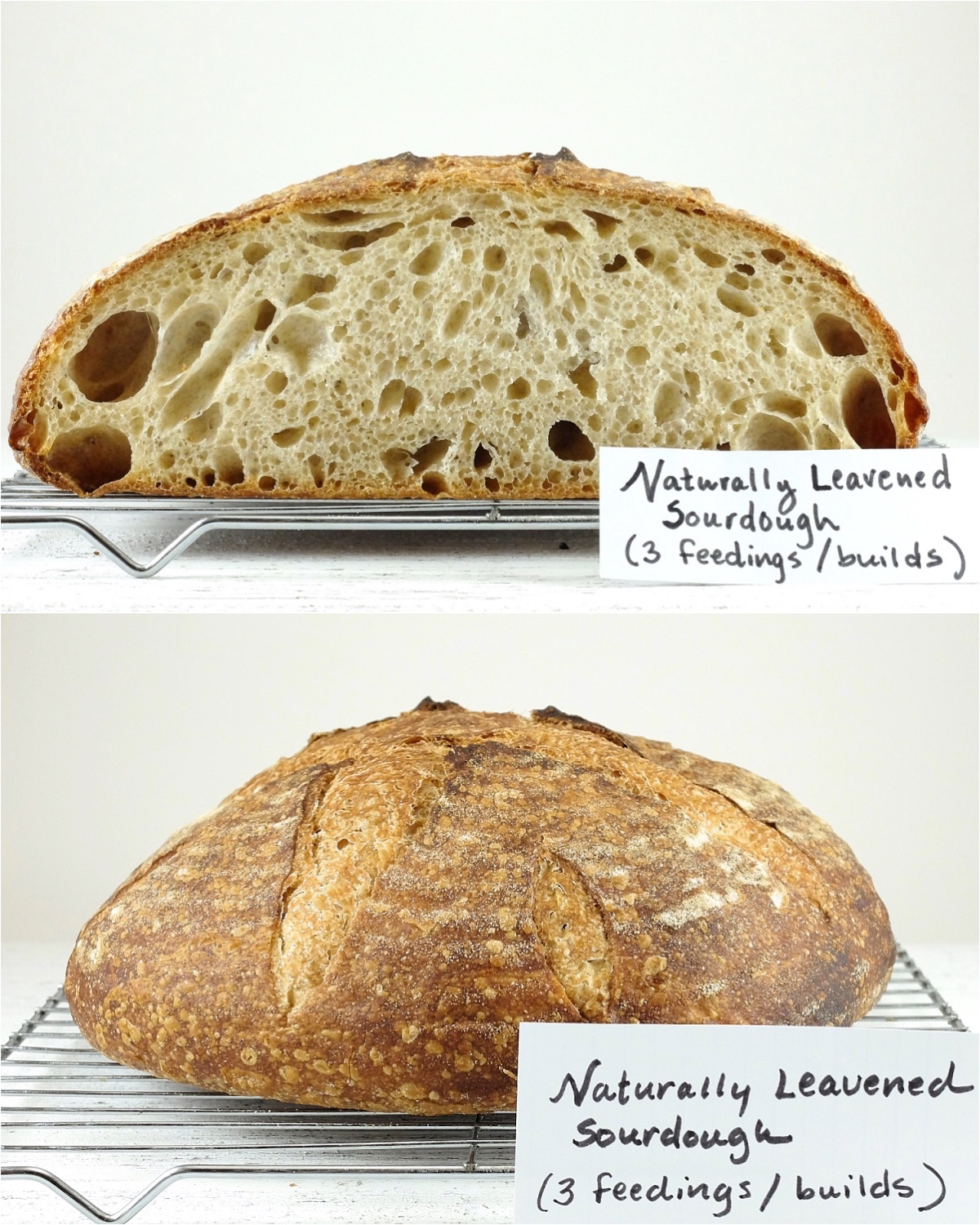
Of course, there are various ways you can accomplish these builds, incorporating more or fewer feedings into the building process.
Keep in mind, if your starter has been stored in the refrigerator for several weeks or longer it's going to need more than just a few feedings to bring it back to full vitality before baking. For more on this, see our tips for reviving a neglected starter.
More room-temperature (70°F) feedings will lead to a more active starter, which will perform better in your baking. In particular, more feedings will contribute to a better rise. But what if you only have time for two feedings/builds before baking the bread recipe above? How do we get from 60g starter to 540g in two builds? And how will fewer feeding/builds affect our results?
Feeding 1: Friday morning, take your starter out of the fridge and begin building immediately, with no discard:
Feeding 2: Friday night, we continue to build the quantity of starter, again with no discard:
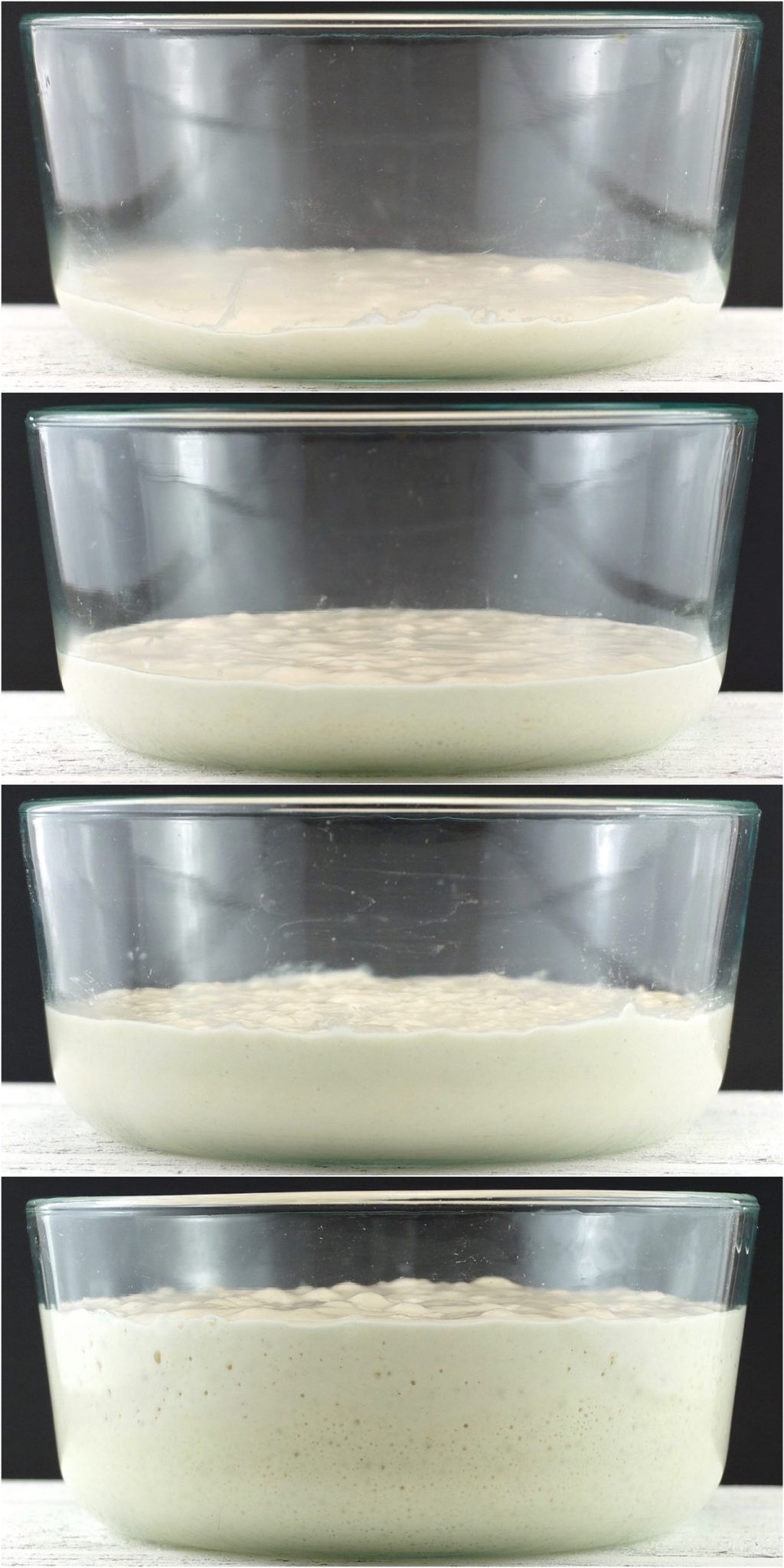
Saturday morning: You'll need 454g starter for the recipe and 20g to feed, leaving only 66g (about 1/4 cup) to discard!
But will our results suffer with only two feedings/builds?
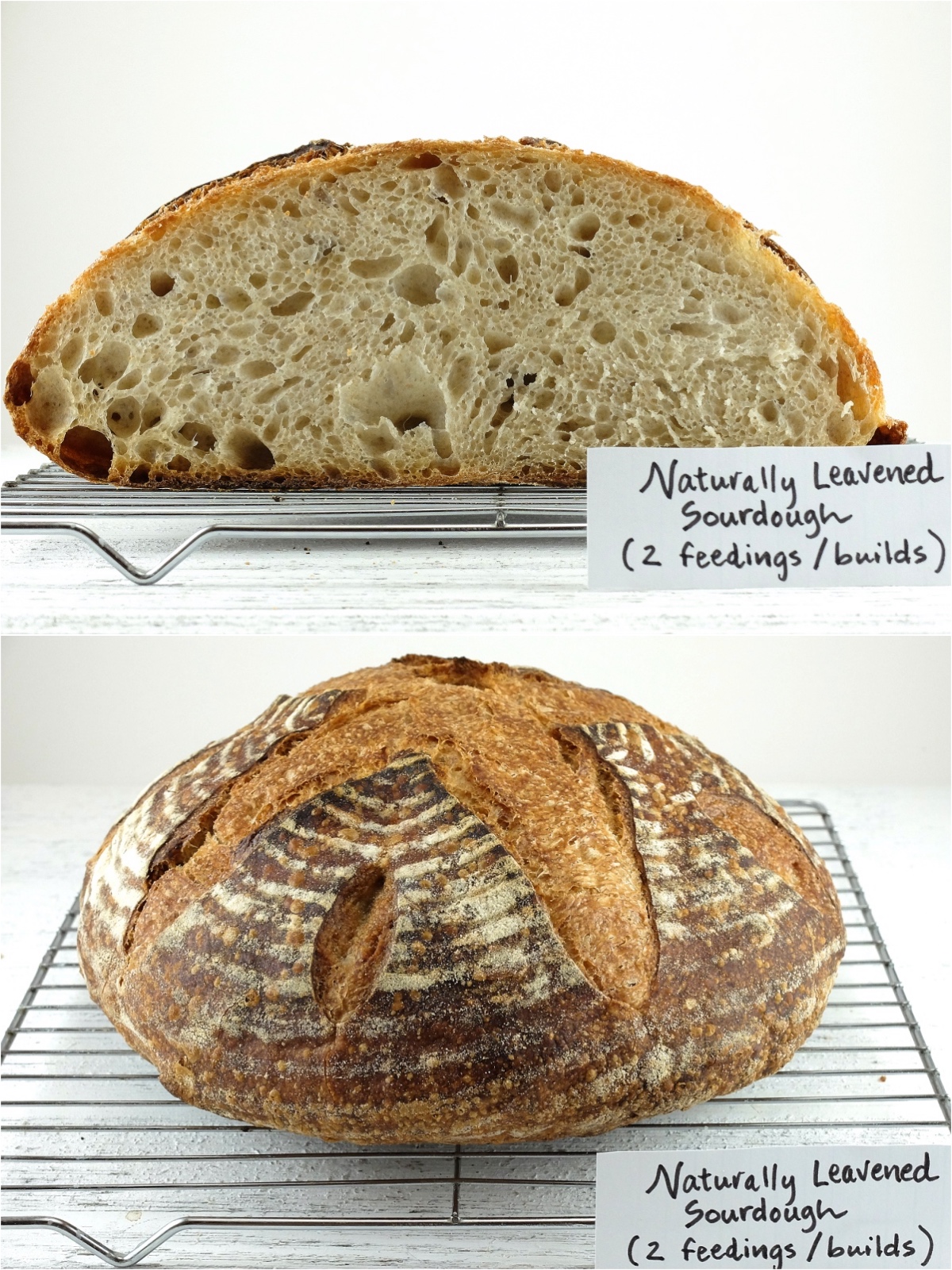
Surprisingly, the results are just as nice as the bread that got three feedings/builds.
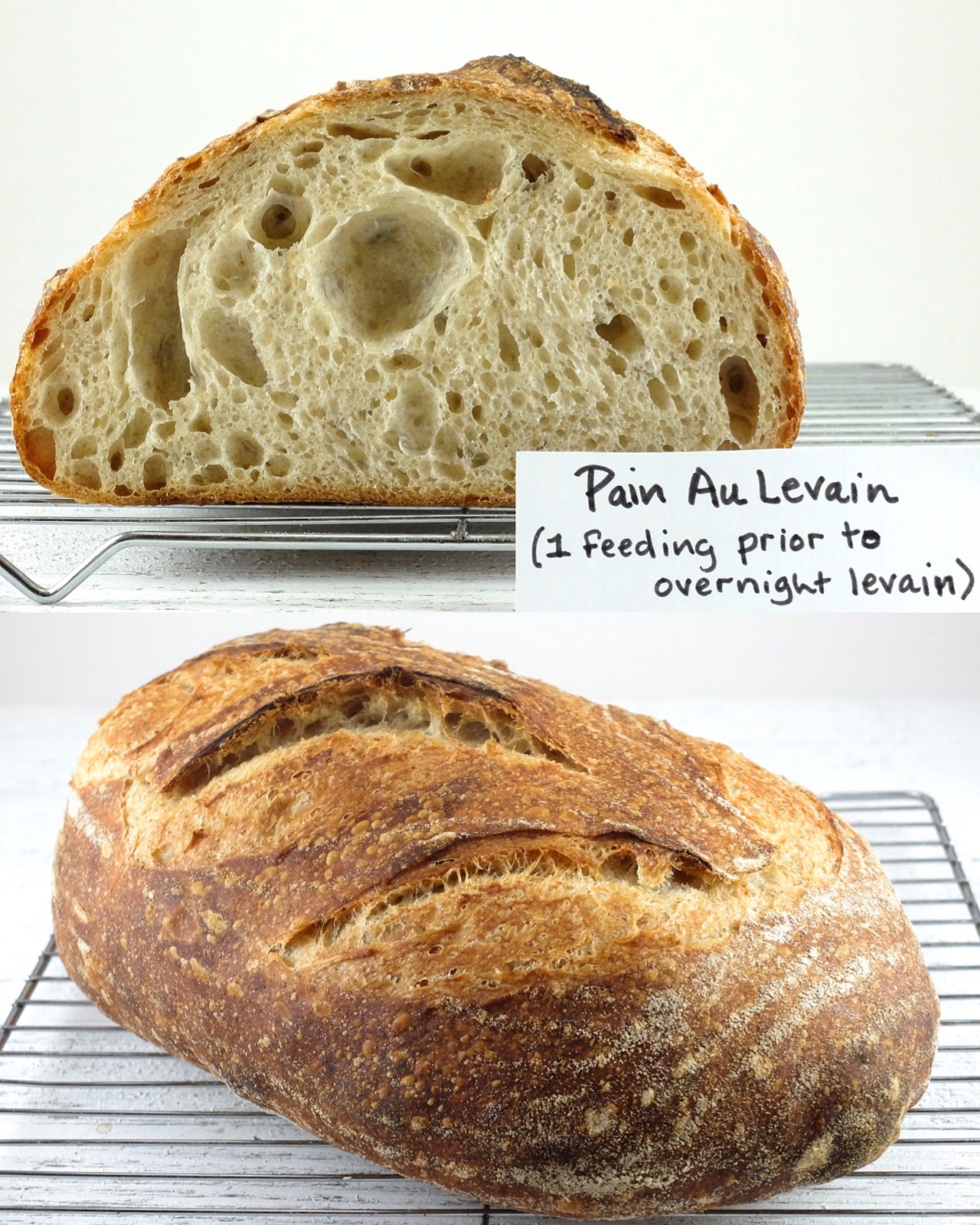
The results are even more surprising when I test our Pain Au Levain recipe with only one feeding prior to the overnight levain. Hardly the lackluster loaf I was expecting!
If more feedings lead to better rising bread, why don't my results bear this out?
Takeaway: A few midweek room-temperature feedings may help improve the vitality of your starter, allowing it to recharge more quickly later in the week.
Reducing the amount of starter you maintain can really revolutionize your sourdough baking routine. We're sure you'll have lots of questions, so please don't hesitate to ask them below! And if you've already taken the leap to a smaller starter, we'd love to hear about your experiences and results!
For a recipe to follow along, as well as easy printing, see our recipe page for A Smaller Sourdough Starter.
Many thanks to Debra Wink for inspiring us to try maintaining a smaller sourdough starter.